Top 7 Database Activity Monitoring Software for 2025
Cyber threats are growing faster than ever, and companies are handling massive amounts of data. This creates a real challenge for businesses trying to keep their databases secure. When sensitive information is spread across different database systems, it's tough to track who's accessing what and when.
Database Activity Monitoring software help solve these pressing security issues. They offer real-time monitoring and complete audit trails. Let's look at 7 of the best DAM tools that could transform your database security in 2025.
Best Database Monitoring Software at A Glance
- Imperva Data Security - Best for security-focused enterprises
- Oracle Audit Vault and Database Firewall - Best for oracle-centric orgs
- IBM Guardium - Best for large enterprises
- Datadog Database Monitoring - Best for observability teams
- SolarWinds Database Performance Analyzer - Best for performance teams
- Icinga - Best for open-source users
- Site24x7 - Best for SMBs & hybrid teams
7 Best Database Activity Monitoring Solutions
Database security is evolving fast. Today's enterprises want tools that can scale across hybrid environments and provide useful insights without overwhelming security teams with false alarms. These 7 solutions excel at enterprise-scale database activity monitoring.
1. Imperva Data Security
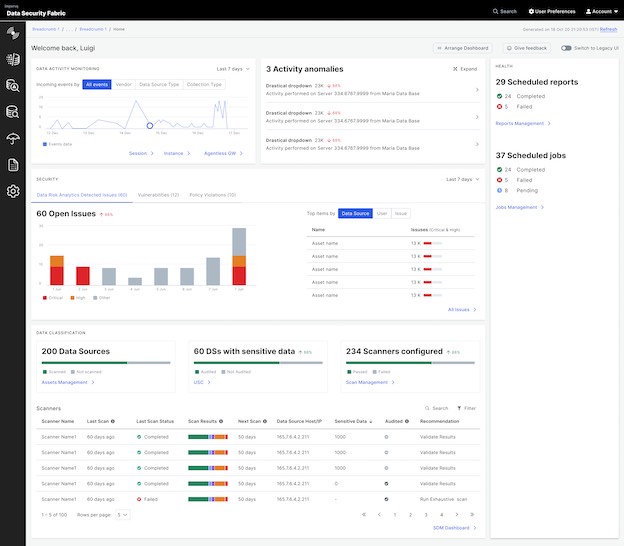
Imperva Data Security combines traditional database activity monitoring with advanced threat detection, offering a well-rounded solution for modern data environments. It uses machine learning to spot abnormal patterns that typical rule-based systems might overlook, helping detect complex or evolving threats. Unlike tools that only track queries, Imperva provides contextual visibility into who is accessing data, why, and under what conditions. It’s especially effective in dynamic environments where cloud integration, flexible policies, and adaptive security are essential.
Pros
- Comprehensive data protection with advanced threat detection
- Supports a wide range of databases and cloud environments
- Strong compliance management and detailed audit capabilities
Cons
- Can be costly for small to mid-sized organizations
- Initial deployment and configuration may require significant effort
Price:
Free trial with limits; pricing upon request.2. Oracle Audit Vault and Database Firewall
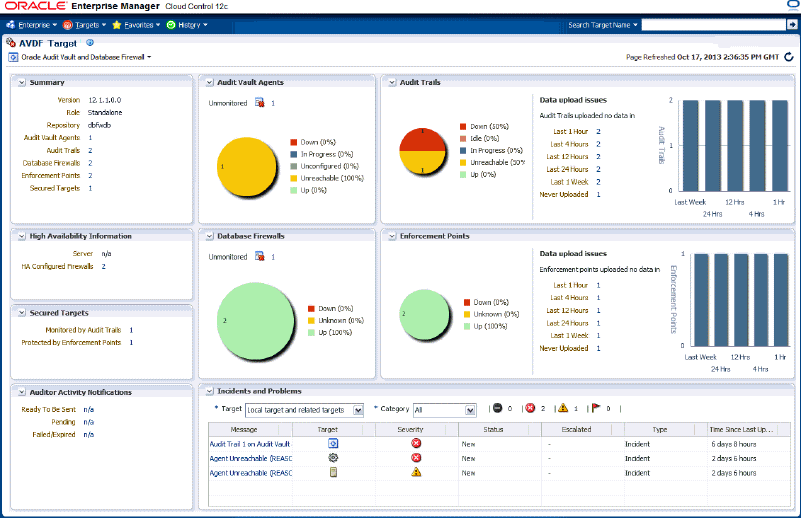
Oracle’s solution integrates powerful auditing capabilities with real-time threat blocking, making it ideal for enterprises that need both visibility and active defense. The Audit Vault collects and consolidates audit data from various sources into a central repository, streamlining security analysis and compliance reporting. Meanwhile, the Database Firewall inspects SQL traffic in real time, blocking malicious activity before it reaches the database. While optimized for Oracle databases, the platform can also support mixed environments, offering flexibility without compromising depth.
Pros
- Integrates audit data from multiple sources for centralized monitoring
- Real-time database firewall to block unauthorized SQL traffic
- Helps meet compliance requirements with comprehensive reporting
Cons
- Complex setup and management process
- Higher cost may be a barrier for smaller businesses
Price:
Pricing upon request.3. IBM Guardium
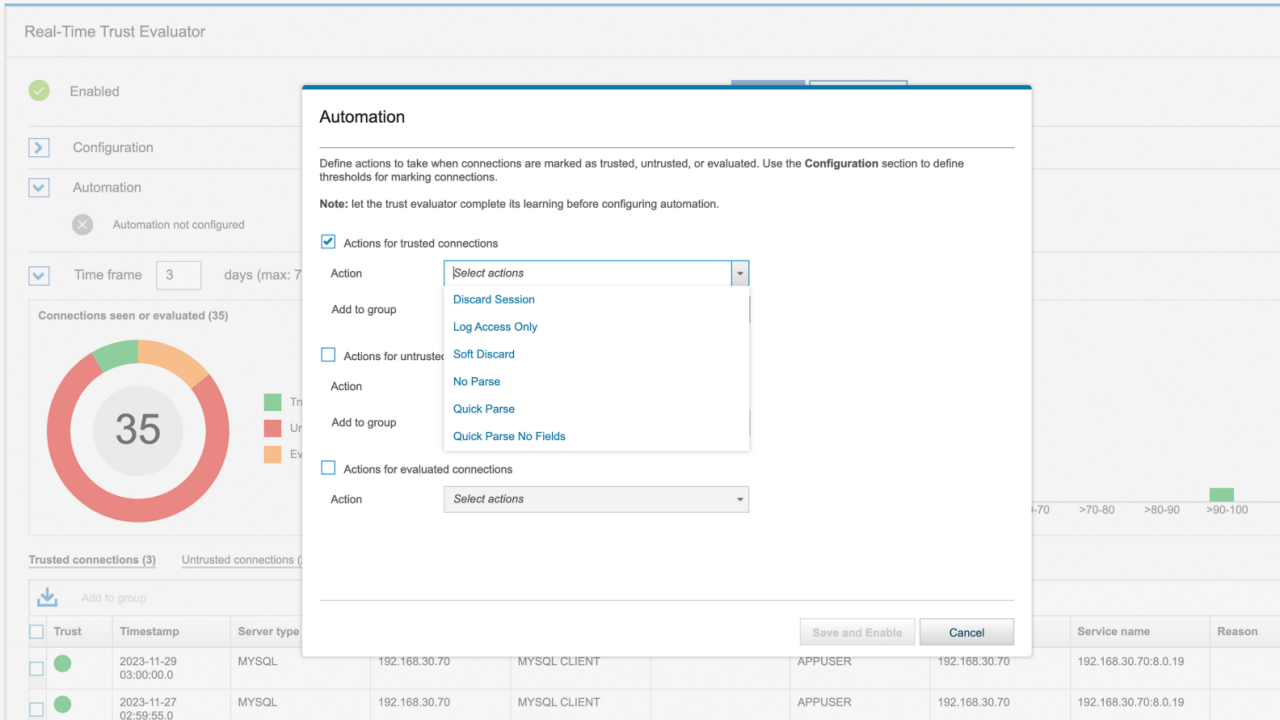
IBM Guardium is widely recognized as a gold standard in enterprise-grade database activity monitoring. It supports over 40 types of databases—relational, NoSQL, and cloud-native—making it highly adaptable to complex, hybrid environments. Its behavioral analytics engine builds a baseline of normal database activity and triggers accurate, low-noise alerts when suspicious behavior is detected. Guardium also stands out with its powerful compliance automation and seamless SIEM integration, allowing security teams to respond rapidly while ensuring full regulatory coverage. It's built to scale, capable of monitoring thousands of databases across large enterprises.
Pros
- Supports 40+ database types, including cloud-native and NoSQL
- Accurate alerts through behavioral analytics
- Automates compliance reporting and audit trails
Cons
- Expensive for smaller teams
- Setup and learning curve can be steep
Price:
Demo available; pricing upon request.4. Datadog Database Monitoring
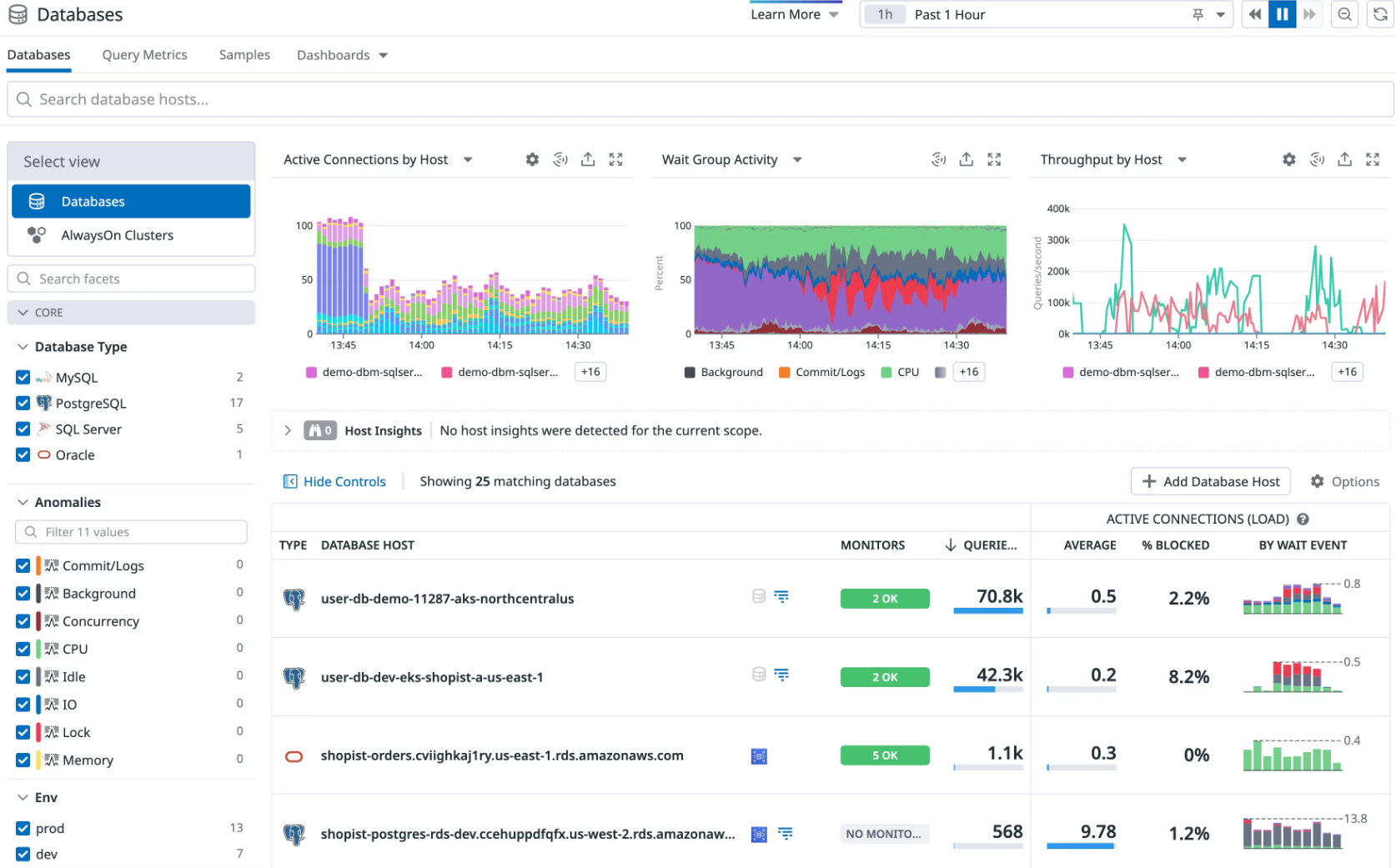
Datadog brings a modern, cloud-native approach to database activity monitoring, tailored for teams with a DevOps or observability-first mindset. It provides unified visibility across database performance, user activity, and infrastructure behavior through intuitive dashboards and visualizations. What sets Datadog apart is its ability to correlate database metrics with application and infrastructure data, enabling cross-functional teams to identify and resolve issues faster. Its collaborative focus makes it especially useful in fast-moving, cloud-based environments.
Pros
- Unified monitoring across databases, infrastructure, and applications
- Easy integration with numerous cloud services and platforms
- Real-time analytics with customizable dashboards and alerts
Cons
- Can become costly as data volume and monitored resources increase
- May require time to fine-tune alerts to reduce noise
Price:
14-day free trial available; pricing from $15/user/month.5. SolarWinds Database Performance Analyzer
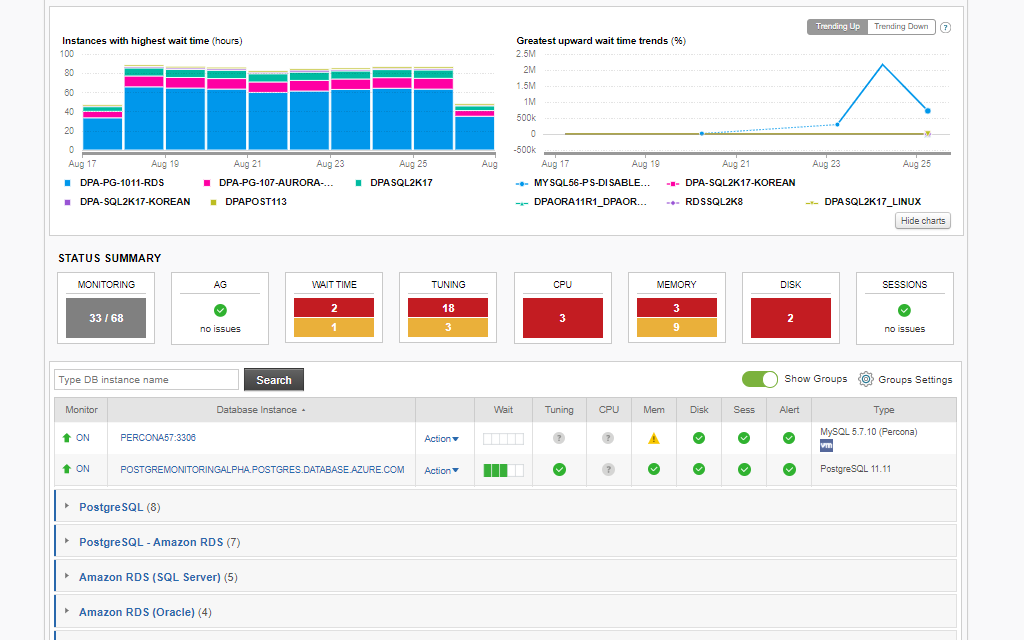
SolarWinds delivers a unique approach to database monitoring by combining real-time activity tracking with deep performance analytics. Designed for environments where security and speed go hand in hand, it uses machine learning to detect anomalies and anticipate issues before they escalate. The tool emphasizes how performance bottlenecks and security risks can intersect, giving teams a clearer picture of database health. Its intuitive interface and detailed insights make it ideal for DBAs and IT teams responsible for both uptime and compliance.
Pros
- Provides deep, real-time performance monitoring and analysis
- Supports a variety of database platforms
- User-friendly interface with customizable alerts and reports
Cons
- Pricing can be high for smaller organizations
- Some advanced features require additional training to fully utilize
Price:
14-day free trial available; Pricing upon request.6. Icinga

Icinga offers flexible infrastructure and database monitoring with a strong focus on extensibility and open-source control. It provides real-time performance checks, customizable alerting, and integrations with popular databases and tools. Designed for teams that value transparency and control, Icinga helps detect issues early and maintain high system availability. With its modular architecture, it's especially well-suited for organizations looking to tailor their monitoring stack to specific needs while keeping full visibility across complex environments.
Pros
- Provides real-time monitoring with performance metrics
- Highly customizable with broad database support
- Open-source and extensible with active community
Cons
- Requires manual setup and tuning
- Interface feels less modern than commercial tools
Price:
Free to use (with subscription options available)7. Site24x7
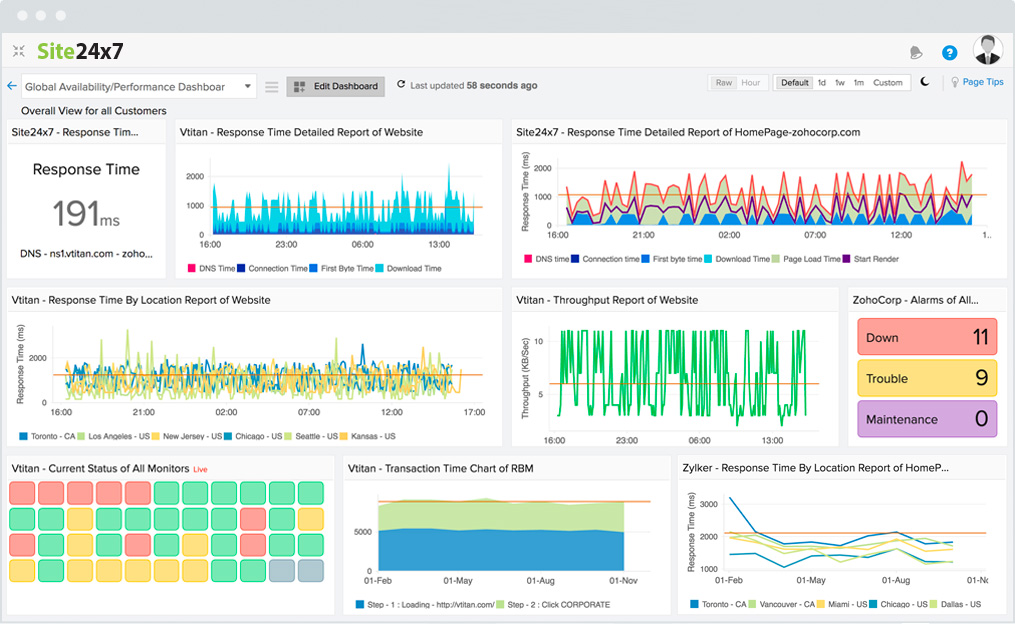
Site24x7 offers comprehensive database monitoring combined with full-stack observability, enabling teams to track database performance alongside infrastructure and application metrics. It provides AI-powered anomaly detection and customizable alerts that help quickly identify performance issues and bottlenecks. The platform supports hybrid environments with easy cloud integrations, making it suitable for businesses needing centralized monitoring and actionable insights. Its intuitive dashboard simplifies complex data, empowering DBAs and DevOps teams to maintain high availability and optimize database health.
Pros
- Supports hybrid and cloud databases with broad compatibility
- AI-driven anomaly detection for proactive monitoring
- Unified view of databases, infrastructure, and apps
Cons
- Pricing can increase with scale
- Advanced features may require learning time
Price:
Free trial available; pricing upon request.Comparison Table of 7 Database Activity Monitoring Tools
| Tools | Database Coverage | Real-Time Monitoring | Security Analytics | Compliance & Audit | Deployment |
|---|---|---|---|---|---|
| Imperva | SQL, NoSQL, cloud | ✅ | Behavior-based | Strong | On-prem & cloud |
| Oracle | Oracle + some others | ✅ (with firewall) | SQL firewall rules | Strong (Oracle) | Mostly on-prem |
| IBM Guardium | 40+ DB types | ✅ | Risk-based analytics | Industry-leading | On-prem & hybrid |
| Datadog | Cloud & on-prem | ✅ | Basic | Light | SaaS |
| SolarWinds | Cloud & on-prem | ✅ | Limited | Basic | On-prem |
| Icinga | Via plugins | ✅ | Basic | Light | On-prem & hybrid |
| Site24x7 | Hybrid & cloud | ✅ | AI alerts | Light | SaaS |
What Are Database Monitoring Software
Database monitoring software track what’s happening inside your databases. They watch things like who is accessing the data, what queries are being run, and whether anything unusual or risky is going on. These tools are especially useful for spotting suspicious activity, making sure sensitive data is protected, and ensuring the database runs smoothly.
Benefits of Using Database Monitoring software
● Proactive Threat Detection: Instead of reacting after a breach happens, these tools help spot unusual behavior—like unexpected access to sensitive data—before it becomes a serious problem.
● Streamlined Compliance: Many industries require strict data tracking. Monitoring tools automatically collect logs and generate reports that help meet standards like GDPR, HIPAA, or SOX with less manual work.
● Insider Threat Protection: Not all threats come from the outside. Monitoring tools keep an eye on privileged users and alert you if someone accesses data they shouldn’t, reducing the risk of insider misuse.
● Performance Insights: These tools don’t just help with security—they also show which queries are slow or causing issues, so teams can fix bottlenecks and keep databases running efficiently.
● Audit-Readiness: When an audit happens, having detailed, well-organized records of database activity can save time and reduce stress. Monitoring tools make it easy to pull up what you need.
How to Choose the Right DAM Tool for Your Business?
Picking the right Database Activity Monitoring (DAM) tool isn’t just about checking boxes—it’s about finding the best fit for your team’s needs and priorities. Here are a few things to think about as you make your decision:
1. Is it compatible with your databases?
First things first, make sure the tool supports all the databases you use, whether it’s SQL Server, Oracle, NoSQL, or cloud-native options. Compatibility is non-negotiable.
2. What matters more—speed or depth?
Some tools offer deep, detailed monitoring but may slightly impact performance. Others keep things lightweight but might skip over finer details. Think about your team’s tolerance for performance overhead and choose accordingly.
3. What are your compliance needs?
If you’re in a regulated industry, strong audit trails and built-in compliance reports are a must. Look for tools that can help automate this and reduce the burden on your team.
4. SaaS or on-premise?
SaaS tools are easier to deploy and maintain, while on-prem solutions offer more control and customization. It really depends on how much flexibility or control your organization prefers.
5. How big and complex is your environment?
Smaller teams may want something that’s simple to set up and manage. Larger enterprises typically need more advanced features like policy management, analytics, and integrations. Choose a tool that matches your scale and complexity.
Bonus: Automate DAM Workflows with GoInsight.AI
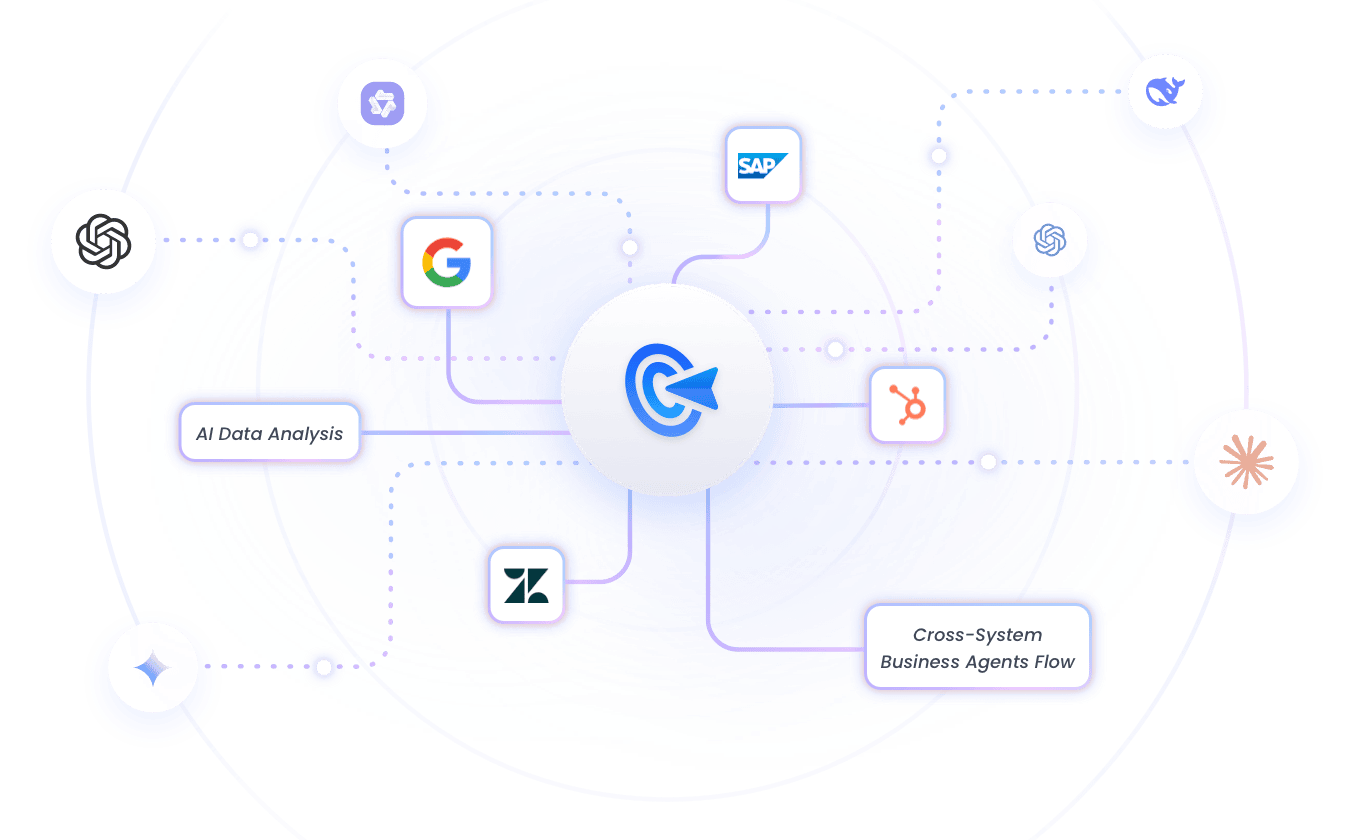
For enterprises using DAM tools like IBM Guardium or Imperva, one key challenge remains: how to turn alerts into timely, automated actions across systems.
GoInsight.AI bridges that gap with a scalable, low-code workflow automation platform. It allows IT and security teams to integrate DAM alerts with business-critical systems — whether that’s triggering incident response workflows, logging to SIEMs, notifying compliance teams, or syncing data to audit platforms.
Unlike traditional automation tools, GoInsight.AI supports logic-driven workflows and AI-powered steps, making it ideal for complex, high-volume environments. It's particularly valuable for enterprises looking to improve response time, reduce manual overhead, and ensure consistent policy enforcement across hybrid infrastructures.
Instead of replacing your DAM stack, GoInsight.AI enhances it — turning raw alerts into intelligent enterprise actions.
Final Thoughts
Database activity monitoring software is now a vital part of enterprise security. The tools featured here highlight the latest in DAM technology, each suited to different needs. The key is choosing a solution that aligns with your compliance goals, security priorities, and day-to-day operations—so your business stays protected and agile.
For added flexibility and workflow automation, platforms like GoInsight.AI can be a powerful complement to traditional DAM solutions.




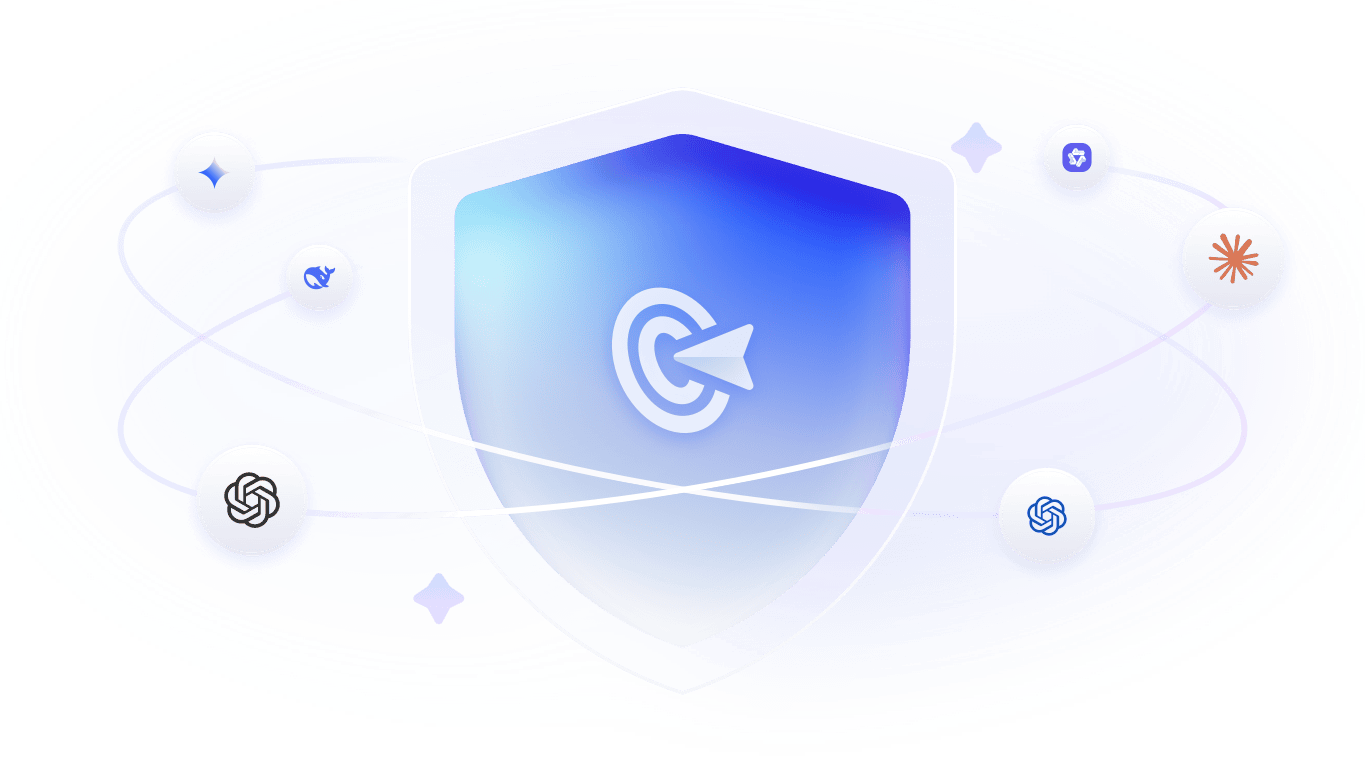

Leave a Reply.